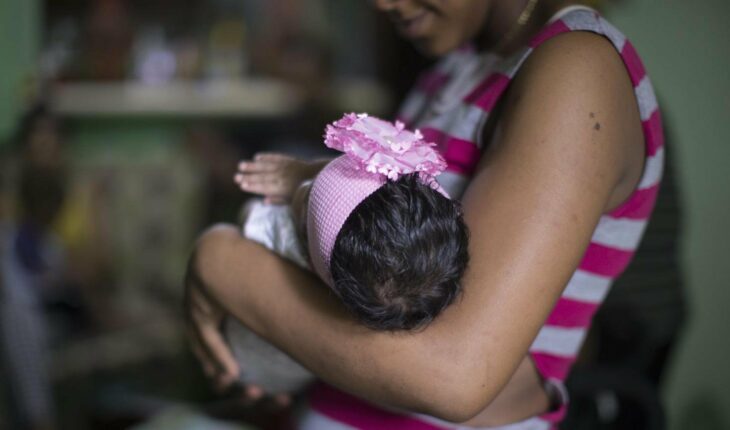Across Latin America, young women face a series of intersecting inequalities that affect their life trajectories to achieve a better social, labor and economic position. But in Mexico this is intensified by being the country where 350,000 teenage pregnancies are registered per year, almost a thousand per day, and where violence against women is reflected in the high number of disappearances and femicides (10 daily).
In addition, the COVID-19 pandemic aggravated the situation: the economic recession highlighted the precarious conditions that prevail in a large number of jobs, especially in sectors where women are often inserted; and confinement policies increased gender-based violence and have forced many victims to live permanently with their aggressors.
The report Dancing in the mists, gender and youth in unequal environments in Latin America and the Caribbean, by Unesco, the College of Mexico and Clacso, highlights all these inequalities and their impact on a nodal moment in the course of life of women such as youth, when a series of resources are built that will define the way in which adulthood is lived.
“In Latin America and Mexico, of course, transitions to adulthood, to the first job, to school leaving, to the first child, are markedly unequal, for example at the time they occur: there are important segments of youth experiencing pregnancy at a very early age, which has consequences throughout life, while another segment greatly delays the arrival of the first child. These are life transitions that are becoming increasingly polarized,” explains Landy Sánchez Peña, director of the Center for Urban and Environmental Demographic Studies at El Colegio de México and one of the authors of the study.
Teenage pregnancy is closely related to intersecting pre-existing social inequalities, the report points out, for example: indigenous adolescents with limited access to sex education, from low-income households and residing in areas with high levels of violence become pregnant than adolescents who do not live violated by these conditions.
“In Mexico, about 350,000 teenagers get pregnant every year, about a thousand every day. These women are already at a disadvantage, some more than others depending on their socioeconomic status, because they will not have the same access to education and job opportunities as those who become pregnant later,” says Laura Flamand, coordinator of the Network of Studies on Inequalities at the Colegio de México and one of the coordinators of Danzar entre brumas.
The economic, health and social effects of the pandemic have exacerbated the vulnerability of adolescents globally. According to the United Nations Population Fund (UNFPA), for every six months of social, preventive and mandatory isolation, seven million more unintended pregnancies are projected in the world.
You may be interested: The effects and costs in the short, medium and long term of teenage pregnancy in Mexico
The National Population Council in Mexico estimates a 30% increase in unintended teenage pregnancies, that is, just over 29,000 additional births to those projected for 2021.
This appears to have resulted, the report notes, from a combination of factors. First, lockdown strategies meant that girls and adolescents were more vulnerable to sexual assault and abuse.
Second, the suspension of face-to-face classes and the lack of attention to the public in health units to needs not related to covid-19 deprived many girls and adolescents of access to instances of prevention, care and / or psychological containment.
Third, as government actions focused on combating the virus, campaigns aimed at preventing teenage pregnancy and distributing contraceptive methods were suspended.
The pandemic also aggravated other violations of women’s rights, leaving them, as already mentioned, more exposed to aggression.
In the context of COVID-19, in Mexico, there was a 2.9% increase in requests for help for cases of gender-based violence, compared to those registered in 2019, according to information from UN Women. In addition, 610,446 complaints to 911 were received for reasons of violence against women in 2020, and also an average of 45 daily complaints of rape.
This in a country where every year 5.4 million minors are victims of sexual abuse; 90% of the cases perpetrated against girls, where the highest incidence of disappearances of women (young people and adolescents) in the region is recorded and where 10 femicides occurcidios al día (2020).
Unrepaired psychological impacts on victims make them more susceptible to the occurrence of new and diverse forms of violence, especially in non-protective contexts, the report says.
This can mean for many victims having to face a continuum of violence such as neglect, abandonment, physical and emotional punishment, sexual abuse and violence, sexual exploitation, intimate partner violence and even femicides, among others.
And in mental health, young women are also not guaranteed their rights. The report reveals that of total health spending in Latin America, only 2% is dedicated to mental health.
“This at a time when the pandemic has caused anxiety to grow, especially in women, and this also has to do with an unequal distribution of care work, with a difference of 30 hours between men and women; that is, it’s almost as if they have another job,” says Laura Flamand.
Care work, the report points out, has a strong impact on young women in the region, who are unable to continue their work and/or student trajectories because they take on these tasks, which makes them young people who neither study nor work (in paid work).
Inequalities that have been dragging on for decades are already intersecting here, just like the issue of unpaid care work, unequal access to education and better jobs and incomes for women.
In particular, young women participate less and are more prone to unemployment, build intermittent work trajectories and face greater precariousness and occupational segregation. This situation is largely related to the fact that they are still the main responsible for reproductive work, which results in a global overload of work that ends up conditioning their insertion and work and life trajectories.
In terms of education, in the Mexican case, the percentage of young people who do not study
nor do they work is only 3.9% among men, but it reaches 21.6% among women, which reflects important gaps in relevant factors when explaining educational trajectories.
Unequal access to the digital world
In the period of social distancing associated with the COVID-19 pandemic, opportunities for participation in the various areas of social life have depended to a large extent on digital inclusion. The inequalities between those who are included digitally and those who are not have deepened, a situation that must be taken up again from the policies in the post-pandemic scenario, the report describes.
Regarding the gender dimension in particular, Danzar entre brumas, in Latin America and the Caribbean, points out that the level of access to information technologies tends to be equal between men and women. However, the differences manifest themselves in the use of technology and in the development of digital skills.
“In the case of the digital divide, there is no difference between men and women, but when skills are analyzed, it turns out that women are more focused on the management of office software and men on programming,” explains Juan Olmeda, a research professor at the Center for International Studies of the Colegio de México and another of the authors of the report.
Thus, skills such as connecting and installing new devices are held by 82% of men from the highest stratum and 56% from the lowest stratum, while among women 75% of the highest stratum and 49% of the lowest stratum have this ability.
Finding, downloading, installing and configuring software and applications is present in 73% of men from the highest stratum and 59% from the lowest stratum; among women, it is in 73% of those in the highest stratum and 55% of those in the lowest.
These differences resemble others in the educational and labor field: “there are still few women studying science, engineering and mathematics, and for those who do it later it is difficult for them to insert themselves in the workplace,” says Olmeda.
Among the factors of more recent years that are contributing to inequality is to consider climate change. For young women, the scarcity associated with climate threats poses the risk of deepening the gender gaps they already face in property, work and income, as well as effects on their health and physical safety.
“For young people, the impacts are linked to income. The fact that climate change affects crops means that the countryside is no longer a job opportunity and although it is thought that agricultural work is done more by men, the truth is that women do practice it, but it is considered as work doméstico, because they are dedicated to weeding or raising crops in family farming, “says Landy Sánchez Peña.
The scarcity of resources that the effects of climate change cause on agriculture can affect early school leaving, the chances of early marriage and the number of children.
Read more: Who is looking for the disappeared edomex?
What to do about all this?
Laura Flamand explains that this report is not only a diagnosis, it also includes proposals and is a kind of call to action for young people. “Public policies to solve these problems have to involve young people. We do not need to guide young people, but to understand them. They are the citizens with whom we are living today and we must generate policies that include them and strengthen their transitions.”
Juan Olmeda, who points out that young people are not passive subjects who should receive the action of the state, “they must be participants in the design of public policies”, and Landy Sánchez Peña, who assures, in this regard, that “it is necessary to stop thinking about tutelage policies for youth, because young people do not need to be guided, they are active citizens.”
The report’s proposals to design public policies to address these inequalities affecting young people and women in particular include:
1.- It is essential to promote the citizen participation of young people and abandon the perspective of tutelage of rights in policies aimed at youth.
2.- We need to generate more information disaggregated by gender and age.
3.- Preserve policies that during the pandemic have prevented the deepening of social inequalities (the emergency placed on the public agenda issues that did not have the visibility they deserve: the right to mental health and well-being, the disproportionate burden of care work that falls on women or the gaps that exist in access to the internet or digital tools) and those that can facilitate life transitions.
4.- It is essential to establish inclusive and anti-discriminatory public policies that empower young women.
5.- We need to promote policies that allow young people to continue or return to education.
6.- It is essential to socially redistribute care work.
What we do at Animal Político requires professional journalists, teamwork, dialogue with readers and something very important: independence. You can help us keep going. Be part of the team.
Subscribe to Animal Político, receive benefits and support free journalism.#YoSoyAnimal





